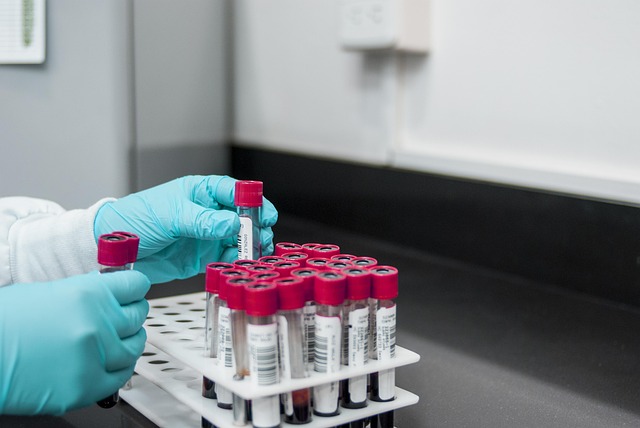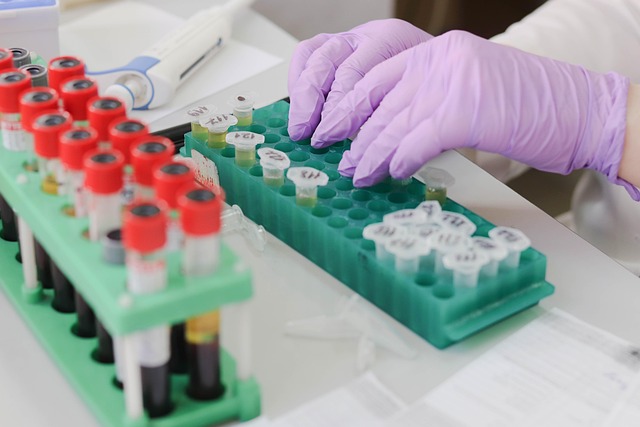Iron deficiency anemia is diagnosed in the UK using standard liver blood tests measuring ferritin, alongside hemoglobin and hematocrit assessments. Abnormal test results combined with symptoms like fatigue or pale skin indicate anemia, leading to treatment options including iron supplements and dietary changes. Specialized care may be required for underlying conditions.
Iron deficiency anemia is a common yet serious condition, often caused by inadequate iron intake or blood loss. In the UK, standard liver blood tests can play a crucial role in diagnosing this condition. This article delves into understanding iron deficiency anemia, exploring how specific liver blood tests help identify it, and interpreting results to guide treatment options. By familiarizing yourself with these processes, you can take proactive steps towards managing your health effectively.
- Understanding Iron Deficiency Anemia
- The Role of Liver Blood Tests in Diagnosis
- Interpreting Results and Treatment Options
Understanding Iron Deficiency Anemia

Iron deficiency anemia is a common blood disorder where your body doesn’t have enough healthy red blood cells to carry adequate oxygen to your body’s tissues. This can result from a variety of factors, including iron-deficient diet, blood loss, or increased iron needs during rapid growth or pregnancy. Understanding the condition and its causes is key to early detection and effective treatment.
In the UK, a standard liver blood test often includes measurements of ferritin levels, which serve as an indicator of iron stores in the body. Low ferritin levels can suggest iron deficiency anemia. Other tests like hemoglobin (Hb) and hematocrit (Hct) assessments are also crucial for diagnosing the condition. By interpreting these results alongside symptoms like fatigue, pale skin, dizziness, or shortness of breath, healthcare professionals can accurately identify and manage iron deficiency anemia.
The Role of Liver Blood Tests in Diagnosis

Liver blood tests play a crucial role in diagnosing iron deficiency anemia, offering insights into the overall health of the liver and its function in nutrient metabolism. In the UK, the standard liver blood test assesses various enzymes and proteins that can indicate liver damage or dysfunction. When it comes to iron deficiency, abnormal results may suggest issues with iron absorption or storage within the body.
These tests can reveal elevated levels of certain enzymes like alanine aminotransferase (ALT) and aspartate aminotransferase (AST), which could point to inflammation or liver cell damage. Additionally, lower levels of ferritin, a protein that stores iron, might indicate deficiency, especially when coupled with other anemias or bleeding disorders. Healthcare professionals often use these markers in conjunction with other diagnostic tools to pinpoint the cause of anemia and guide appropriate treatment.
Interpreting Results and Treatment Options

After your standard liver blood test UK, it’s crucial to understand what the results mean. If iron deficiency anemia is suspected, the test will show lower-than-normal levels of hemoglobin or hematocrit – key indicators of red blood cell health. Your doctor might also observe a decrease in the number of red blood cells (RBCs) overall.
Treatment options vary based on severity and underlying causes. Typically, iron supplementation is prescribed to boost iron levels. Dietary changes, such as consuming foods rich in non-heme iron or vitamin C, can enhance absorption. In some cases, underlying conditions like gastrointestinal disorders may require further specialized treatment.
Iron deficiency anemia is a common yet treatable condition, and understanding the role of liver blood tests in its diagnosis is key. The standard liver blood test (UK) provides valuable insights into overall health and can help identify iron deficiency through elevated ferritin levels or reduced hemoglobin values. By interpreting these results accurately, healthcare professionals can recommend suitable treatment options to manage anemia effectively.
